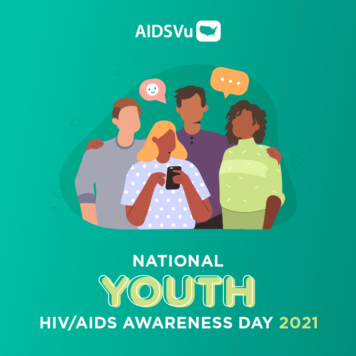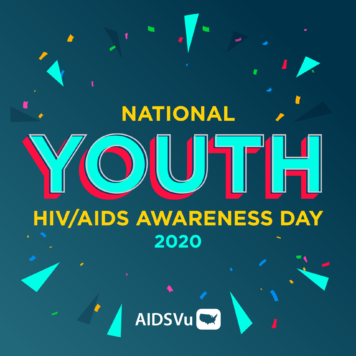Stephanie M. DeLong, PhD, MPH, is a Postdoctoral Fellow at the Johns Hopkins Bloomberg School of Public Health and is a member of the Johns Hopkins University Center for AIDS Research (CFAR) Adolescent and Young Adult Scientific Working Group.
Q: What brought you to the HIV/AIDS space and why did you choose to focus on adolescents and young adults specifically?
My research passion has been studying gender-based violence among adolescent girls and young women (AGYW) ages 15 to 24, mainly in sub-Saharan Africa and the U.S. The burden of new HIV infections among this population globally is very high – in 2018, AGYW represented 20% of new HIV infections globally. – Factors such as intimate partner violence, a form of gender-based violence, is associated with HIV incidence. It is unacceptable to me that so many girls and young women are acquiring HIV and it is impacting their lives and the lives of those they love. I wanted to join in the effort to prevent new cases of HIV. As I’ve gotten more involved, I have also become more passionate about ensuring that people living with HIV are linked to and adhere to care.
Q: According to your paper, “From HIV to COVID-19: Focusing on and Engaging Adolescents and Young Adults During the Pandemic,” published in the American Journal of Public Health adolescents and young adults were overlooked in the early stages of the HIV epidemic and now in the COVID-19 pandemic. What are the consequences of this lack of focus on younger people during public health crises like these?
There are around 1.2 billion adolescents and young adults aged 15 to 24 globally. If you ignore an age group that accounts for such a large proportion of the world, it’s difficult to control infectious disease epidemics or pandemics like HIV or COVID-19. This is largely because adolescents and young adults (AYA) link a lot of different people and places. Young people are constantly moving around and interacting with different groups through their schooling, sports, jobs, and the military, for example, compared to older adults who may not be moving around in as many different spaces. Additionally, many AYA are willing to take risks that older individuals may not be willing to take given their developmental stage.
Q: The paper describes how adolescents and young adults are “challenged by the same social inequities that place them at risk for HIV, poor HIV outcomes, and other illnesses.” Young Black Men and Women represented the majority of young people living with HIV. What are these social inequities and how do they affect COVID-19 and HIV-health related outcomes for young people, especially young people of color?
These inequities are multi-level and can include a variety of factors such as inadequate housing, power dynamics in relationships, low access to healthcare and prevention services, food deserts, and other policies, as well as lack of protective factors such as social support. These inequities can increase an AYA’s exposure to both COVID-19 and HIV by impacting easy access to testing and adherence to medications, in the case of HIV.
I’ll give you an example related to COVID-19 or HIV prevention – consider a 16-year-old African-American girl in a large city where historical racism, lack of access to jobs, transportation, and health care, and neighborhood violence are concerns. This combination of factors may make it harder for her to prioritize whether she has a mask to prevent COVID-19 or more condoms to prevent HIV. She might instead be worried about finding a safe place to stay for the night or where she can obtain food for the day.
One additional point – while we consider risk, we also need remember internal resiliency. Youth can be active agents to shape their environment and future by finding effective solutions to the challenges they face.
Q: The article outlines key approaches from the HIV epidemic to guide public health interventions and efforts during the COVID-19 pandemic for adolescents and young adults, including proper data collection and surveillance. Could you expand on these approaches and why they are important?
We use data to make decisions. If we don’t have information about a specific population or don’t have information stratified by characteristics such as gender, age, socioeconomic status, or location, it makes it hard to intervene in ways to help a specific group and others they interacted with in a timely manner.
A lack of data means we’re reliant on past knowledge or information which may not be pertinent in a particular epidemic or pandemic. Or we end up acting based on what we believe are the best options at the time. That’s why it’s so important to collect data and conduct proper surveillance. It allows us to be informed and act more quickly with targeted interventions.
Q: April 10 is National Youth HIV/AIDS Awareness Day, an opportunity to raise awareness of HIV among adolescents and young adults. What message do you have to the community for this day?
In the past year, the world has been living with the COVID-19 pandemic and its challenges. It’s really made the concept of a pandemic tangible to all of us, including adolescents and young adults. Yet for 40 years, the world has also been living with the HIV epidemic – which at times, may not seem real to people. The HIV epidemic is not mentioned routinely on social media or in the news like COVID-19 is now, but it’s still real, and everyone is at risk if proper precautions aren’t taken.
To the youth on National Youth HIV/AIDS Awareness Day, I would say: Learn about HIV and how to protect yourself from it. Normalize discussing HIV with your friends and family.
My message isn’t new – it’s just a reminder for youth to take to heart.




